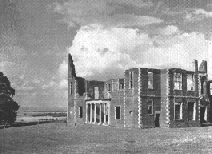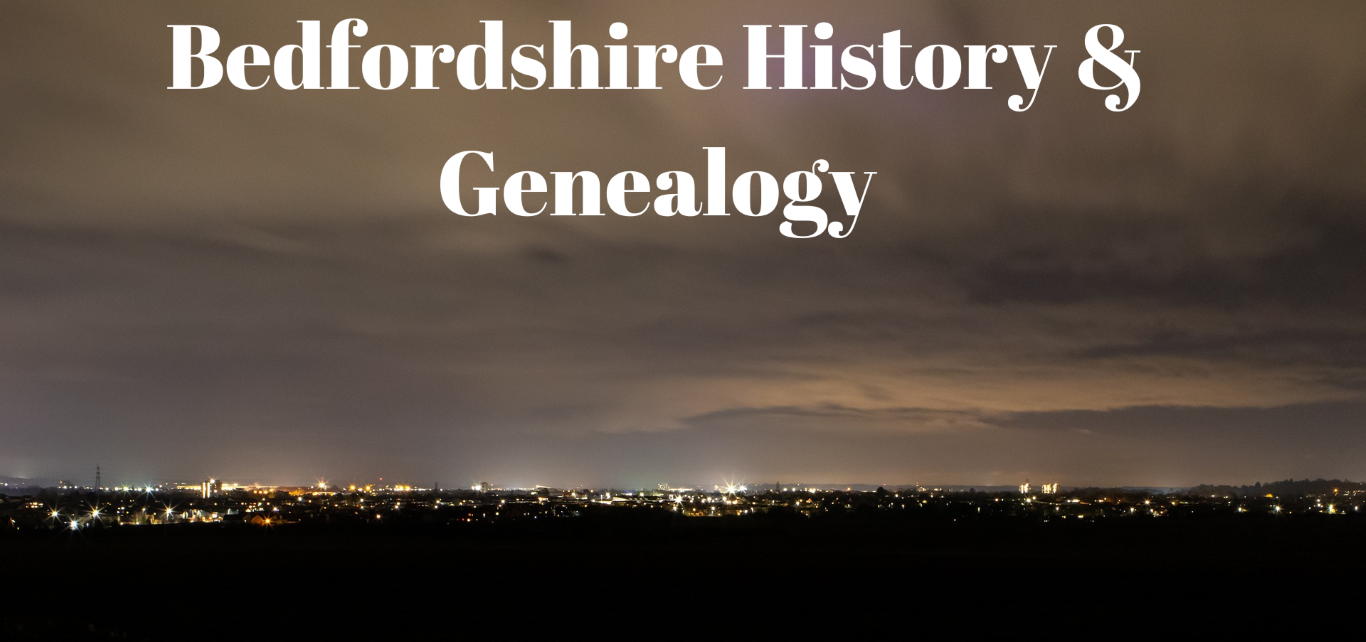(From the "Pictorial Guide to Bedfordshire" by Eric Meadows, White Crescent Press Ltd, Luton, Bedfordshire, UK, 1975. ISBN 0-900804-10-6)
|
The Conquest family held the manor from 13C to 18C when it was known as Conquestbury or Houghtonbury. The manorhouse was near Bury Farm in a secluded hollow. The church is an interesting one - Decorated Gothic arcades and chancel arch with a faint Glory painting above it, Perpendicular Gothic the rest. The tower contract of 1393 with a mason of Dunstable and of Totternhoe was 10s per foot of foundations and, above ground, 13s 4d per foot plus six quarts of frumenty; completion in three years. The south doorway is magnificent. Inside are a roof with carved bosses, carvings on the choir stalls, Conquest brasses of 1493 and 1500, and a grand alabaster monument 1629 to eminent Dr Thomas Archer, rector 1589-1631, showing him preaching. The former rectory is early Georgian, built for Zachary Grey, rector 1724-66, editor of Hudibras, author of a number of books of religious controversy and of a commentary on Shakespeare, none of which enjoy popularity today. |
|
|
The well-known ruin of Houghton House lies to south on the hill towards Ampthill, once Houghton Park. Lady Pembroke, Sir Philip Sidney's sister, had the house built circa 1615-21, on crown land. The three-storeyed house with corner towers was a grand still late-Tudor building probably by John Thorpe. What gave it magnificence and makes it outstanding architecturally are the classical features of stone central on three fronts - the south porch-tower, a Tuscan north arcade and, on the west front, an incomparable Tuscan-columned loggia, its frieze with heraldic devices of Sidneys and Dudleys that prove its early date, circa 1620. This is about the earliest Stuart style in England and is attributed to Inigo Jones. The Haynes Grange Room at the Victoria and Albert, pine-panelled with Corinthian pilasters, may have come from this house and also be by Inigo Jones. |
 Houghton House, West and South fronts Houghton House, West and South fronts |
|
After Lady Pembroke's death, the Bruce family acquired the house in 1624 and lived in it until 1696. In 1738 it passed to the Russells and the Duke of Bedford in 1794 unroofed it, removing most of its fittings. The staircase dated 1688, said to be by Wren or Hawkesmoor, is in The Swan Hotel at Bedford; also a fine 18th century gateway with screen is in Church street at Ampthill. The ruin is now an ancient monument. Bedfordshire abounds in traditions concerning the origin of places mentioned in Bunyan's "The Pilgrim's Progress" and, of these, the belief that Houghton House was the original 'House Beautiful' is by far the most persistent. |
|
[From Samuel Lewis's Topographical Dictionary of England 1831.]
HOUGHTON-CONQUEST, a parish in the hundred of REDBORNESTOKE, county of BEDFORD, 2£ miles (N. by E.) from Ampthill, containing 651 inhabitants. The living is a rectory, with which that of Houghton-Gildable was united in 1637, in the archdeaconry of Bedford, and diocese of Lincoln, rated jointly in the king's books at £25.18.9., and in the patronage of the Master and Fellows of St. John's College, Cambridge. The church, dedicated to All Saints, contains several monuments to the Conquest family; besides one to the memory of Thomas Archer, rector of the parish, who made a curious entry in the register respecting his own coffin, dated in 1623, and another to that of Dr. Zachary Gray, editor of Hudftas, and a commentator on Shakspeare, also incumbent of this parish. There is a place of worship for Wesleyan Methodists. This place derives the adjunct to its name from the family of Conquest, lords of the manor prior to the thirteenth century, whose mansion, ornamented with grotesque carvings, is now a farm-house: here James I. sojourned two days, in 1605, on a visit to Sir Edmund Conquest. A free school and almshouses for six poor persons were, founded and endowed by Sir Francis Clerke, in 1632: the salary of the master is £16, and the almspeople receive £8 per annum, whihc is divided amongst them. In 1691, Edmund Wylde, Esq. bequeathed £140 to be expended in land, desiring the rental to be applied to the repair of these premises, and the surplus to be given to the poor people: there are twenty-two scholars. Houghton Park house, now destroyed, was a celebrated seat of the family of Bruce, Earls of Elgin and Aylesbury.
The Conquest Family.
As far back as 1223 Geoffrey Conquest is found engaged in a law-suit with his mother-in-law concerning the manor of Houghton, to which the name Conquest was added during the family's 500 years' tenure. John, who succeeded in 1297, was held in high esteem by both Edward I and Edward II, the latter appointing him Conservator of the Peace for the county while he was away in Scotland in 1314. A later descendant, Sir Richard, was a colonel in the Royalist army and his estates were sequestered in 1644, being released in 1651 only after a law-case resulting from allegations by ill-disposed persons that Sir Richard had concealed the true value of the property. The last of the male line was Benedict, who sold the manor to the Earl of Upper Ossory in 1741.
The Bruce Family.
This famous Scottish family, which produced a King of Ireland and three Kings of Scotland, came to England with James I and lived at Houghton House for seventy years. Thomas, who acquired Houghton House in 1624 was made Earl of Elgin in 1633, and his son Robert became also Earl of Aylesbury and Viscount Bruce of Ampthill. Robert was a Royalist and became Lord Chamberlain after the Restoration. His son, Thomas, the third earl, also strongly supported the Stuarts and retired in 1696 into voluntary exile abroad on account of his sympathy with James II. He never returned to Houghton House, which was sold to the Duke of Bedford in 1738.
